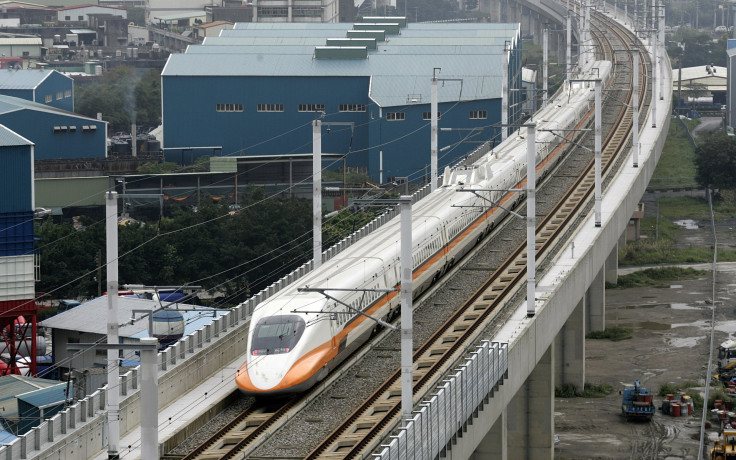Japan Bullet Train Staff Sit Between Moving Locomotives To Test Safety

As part of a safety drill, a group of employees at one of Japan’s largest railway operators were made to sit between train tracks in tunnels as high-speed bullet trains passed by. The employees were asked to crouch in the passageway and feel the speed of the bullet trains passing above them at maximum speeds of 300 kilometers per hour.
Local Daily Mainichi Shimbun reported that several employees told their bosses they did not want to participate, however, their concerns were brushed off with a simple response of “But it’s your turn.”
JR West, the Japanese rail company, has defended the safety exercise and said it has no plans to alter the exercise despite complaints and concerns from employees.
A company spokesman said about 190 staff working on safety maintenance for Japan's famed shinkansen bullet train have undergone the training and it aims to teach the staff the importance of every part of their jobs.
While acknowledging the complaints from some members, the spokesman said, "We pay close attention to safety while doing the training. We will continue this training while ensuring it serves a purpose and is done safely.”
The spokesman said the drill was introduced in 2016 after an accident in August 2015 when part of a bullet train’s exterior fell off because it wasn’t securely bolted. In addition to the insufficient tightening, a lack of proper safety inspection was blamed for the incident.
The purpose of the exercise was to “give employees who work with train cars an opportunity to experience and understand the importance of their work,” he added, Japan Today reported.
During the training, the employees were divided into two teams. The teams were separately led down into a small groove between train tracks measuring about one meter wide and one meter deep. They were asked to wait for the train to pass and were provided just hats and safety goggles. The spot was chosen as the train would move at its maximum speed there.
According to the report, it was a “300 Kilometer-per-hour Close Proximity Training.”
While one employee described the drill as “a horrible experience," another said it was "just like a public flogging."
“We can understand the danger of loose bolts without going into the tunnel. This is a matter of putting staff in danger,” an employee said.
Another employee said three trains passed near him during the training session. "The wind pressure was enormous. I felt as if I had been pressed down from above, and it was scary. I wonder what the meaning of such training is," he said.
The JR West labor union had also requested the management to stop the exercise but they are yet to get a reply on the matter.
Takahiro Nakamura, a professor of Societal Safety Science at Kansai University said, "There are safety education methods in which workers experience simulated dangers to prevent work-related accidents. However, the company's training is problematic because the risks of an accident occurring in a tunnel can't be completely eliminated.”
"The program may be based on the idea that people can change their awareness if they have intense experiences, but human errors cannot be eliminated so easily. Undergoing such experiences in a tunnel is far removed from the company's goal of raising employees' awareness of the importance of maintenance work. Such training is meaningless unless the company provides education that fills the gap," he added.
© Copyright IBTimes 2024. All rights reserved.





















